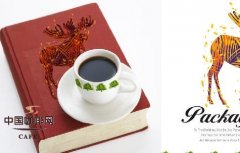The basic knowledge of boutique coffee the origin of Kopi Luwak
Guide: Kopi Luwak, also known as civet coffee, is one of the most expensive coffees in the world. This kind of coffee is actually baked from the droppings of arboreal wild animals commonly known as "civet cats" in Indonesia.
When I was a child, I heard such a saying: "A flower in a crop depends on dung." You may not have thought that one day you will use perfume made from animal feces, drink coffee made from animal feces, and eat traditional Chinese medicine made from animal faeces. It turns out that the droppings of many kinds of animals are treasures!
For example, a cup of Kopi Luwak costs 200 to 300 yuan, and a small piece of sperm whale droppings is even more valuable.
Ingenious use one: high-end drinks
Kopi Luwak
Kopi Luwak, also known as civet coffee, is one of the most expensive coffees in the world. The price per jin ranges from US $300 to US $800 and is abundant in Indonesia and other places. It costs 200 to 300 yuan to drink a cup of Kopi Luwak in Hong Kong, and it is only available in one or two of the most exclusive hotels. Kopi Luwak has become a "coffee upstart", attracting coffee fans more than the traditional top Jamaican Blue Mountain coffee.
This kind of coffee is actually baked from the droppings of arboreal wild animals commonly known as "civet cats" in Indonesia.
The civet likes to choose the most ripe, sweet, fat and pulpy coffee fruit in the coffee tree as food. The coffee fruit passes through their digestive system, the flesh outside the fruit is digested, and the hard coffee beans are excreted intact through the civets' digestive system. After this digestion process, the coffee beans have undergone unparalleled miraculous changes-as the bitter proteins in the coffee beans are digested, the Kopi Luwak tastes much less bitter and has a bit more round and mellow taste.
Early Indonesian farmers regarded civets that specialize in eating ripe coffee fruits as mortal enemies, but I don't know which one dared to eat crabs on a whim and picked coffee beans from the civet droppings to make coffee, which was processed and roasted. The coffee made by the world and experts is full of praise.
Important Notice :
前街咖啡 FrontStreet Coffee has moved to new addredd:
FrontStreet Coffee Address: 315,Donghua East Road,GuangZhou
Tel:020 38364473
- Prev

Boutique coffee. Refreshing Colombian coffee.
Coffee was first introduced to Colombia in 1808 when it was brought by a priest from the French Antilles via Venezuela. Today, the country is the second largest producer after Brazil, with an annual output of 13 million bags of 60 kg each, while Brazil produces 22 million bags a year. The status of coffee in Colombia can be seen in the following examples-all entering the
- Next

The History of Coffee in China the Biography of Coffee in Zhukula Village, Yunnan Province
When it comes to the history of Chinese coffee, we have to mention Yunnan Dali Zhukula Coffee, which plays a vital role in the history of Chinese coffee. The ancient coffee forest in Zhukula Village is a unique variety of small-grain coffee in Yunnan. It is very rare and of excellent quality. It can be called a living fossil of Chinese coffee. We went to explore the century-old coffee legend of Zhukula village. Zhu Kula, located in Yunnan Province
Related
- Detailed explanation of Jadeite planting Land in Panamanian Jadeite Manor introduction to the grading system of Jadeite competitive bidding, Red bid, Green bid and Rose Summer
- Story of Coffee planting in Brenka region of Costa Rica Stonehenge Manor anaerobic heavy honey treatment of flavor mouth
- What's on the barrel of Blue Mountain Coffee beans?
- Can American coffee also pull flowers? How to use hot American style to pull out a good-looking pattern?
- Can you make a cold extract with coffee beans? What is the right proportion for cold-extracted coffee formula?
- Indonesian PWN Gold Mandrine Coffee Origin Features Flavor How to Chong? Mandolin coffee is American.
- A brief introduction to the flavor characteristics of Brazilian yellow bourbon coffee beans
- What is the effect of different water quality on the flavor of cold-extracted coffee? What kind of water is best for brewing coffee?
- Why do you think of Rose Summer whenever you mention Panamanian coffee?
- Introduction to the characteristics of authentic blue mountain coffee bean producing areas? What is the CIB Coffee Authority in Jamaica?

